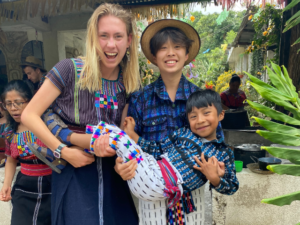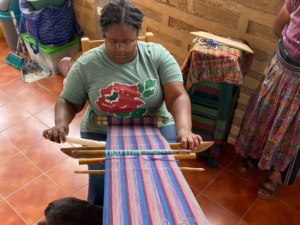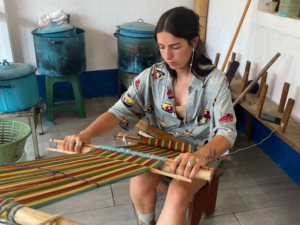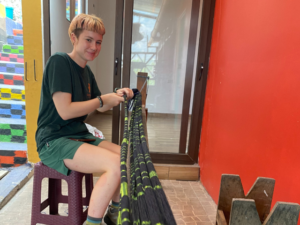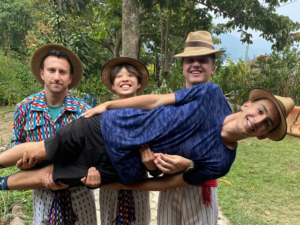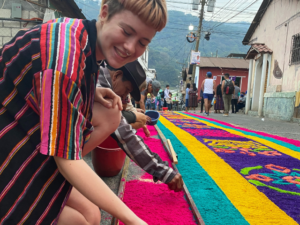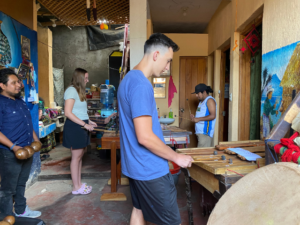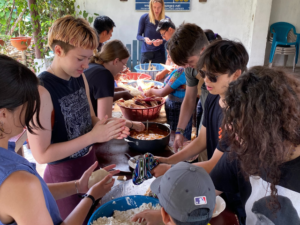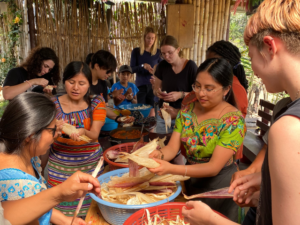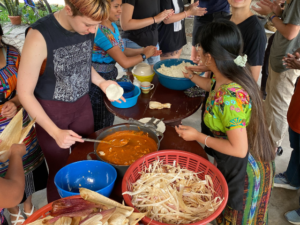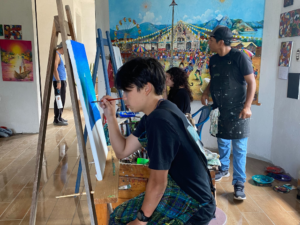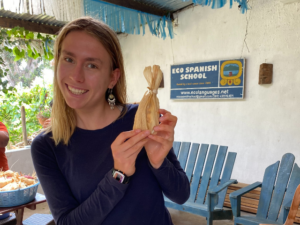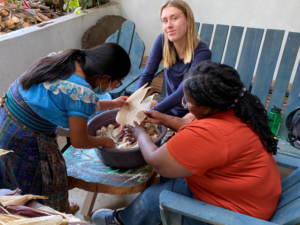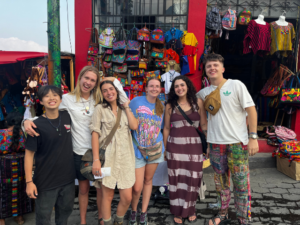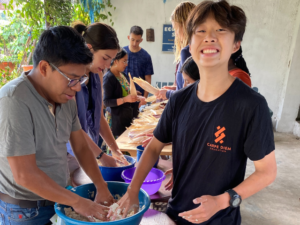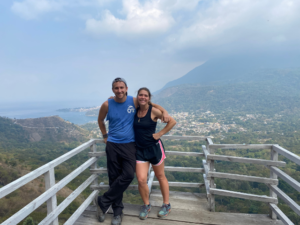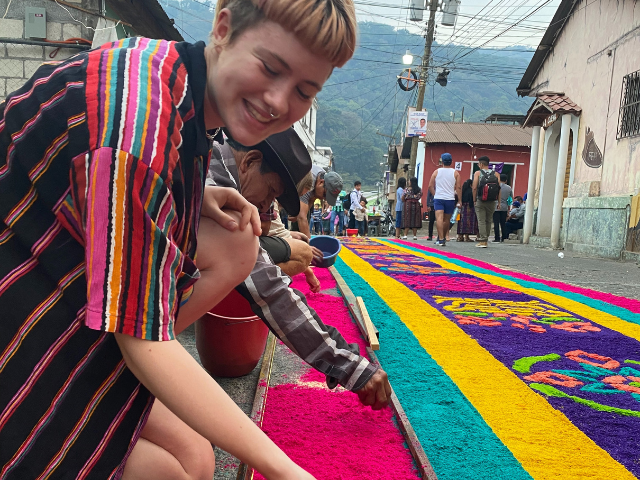
Written by Central America Students, Iris and Menna
This week was our second full week in San Juan, with preparations for Semana Santa in full swing! We started our second round of cultural classes, as well. On Thursday, we had a cultural potluck at our school, which meant we spent the entire morning learning to make “chuchitos,” a kind of small tamale. Our host families came in the afternoon to share the foods they had made and we all came together to eat as a family.
During the week, we got to see people setting up for the holiday, from putting up archways with hanging fruit, to collecting materials for alfombras, the decorative “carpets” that flood the streets during Semana Santa. These alfombras are made by either specific neighborhoods, families, or community groups. They can be made from colored sawdust, glitter, sand, pine needles, fruit, vegetables, paint, and more! On Friday, instead of our cultural class, we had the opportunity to help make the alfombra for the neighborhood that was located closest to our school. Then in the evening, all of us went out to view the processions and finished alfombras in their full glory. It was amazing to witness!
Our Top Three Highlights of the Week:
🌎 On Friday, we were given the opportunity to spend the evening with our host families and explore how San Juan celebrates one of the most important days of Semana Santa. After weaving through the delicate alfombras, street food, and plenty of new tourists, we accidentally all met up as a group in front of the town church right as the procession was leaving. It was lit up in purple lights, and there was a lingering incense of tree sap being burned as the procession moved down the street.
🗣️ Spending another week at Eco Spanish School was also valuable because we were able to form stronger bonds with our teachers. Some students attended chocolate tours, walks to ruins, and were given to opportunity to translate a coffee tour happening on the property. The sense of community was also felt in the engaging games we would play during the break in class. Some memorable ones included a memory game, water balloon tosses, and creating numbers in Spanish as fast as possible. The teachers and the students all playing together created a sense of community.
🐟 Finally, some members of the group enjoyed going down to swim and kayak in Lago Atitlán regularly after classes. It was exciting to see the tule plant that we had worked with a few weeks ago playing a role in the environment. It was a convenient and refreshing way to connect with nature and make the most of our location.
But transformation always comes with opportunities for growth: What were our main challenges this week?
Something that made our last two weeks on the lake both harder and unique was the amount of time that we spent away from the group as a whole. We were having one-on-one Spanish classes, cultural classes in small groups, and staying with different families, therefore our communal time was more rare. This was a challenge because we had gotten used to that support system, but it made the meetings and the time we did have together more focused and special.
🌎 What has surprised you about your host community, culture, or destination?
We recently reflected, when our time with the homestay families came to a close, what we learned about the Guatemalan culture by living in and what we want to keep in our minds moving forward. People expressed interest in what they learned about Mayan culture, especially family connection and how active the culture is today. We talked about the politics of both the country today with the upcoming elections and the the historical contexts of the internal conflict.
Hasta luego! ❤️ Spring 2023 Central America Semester

